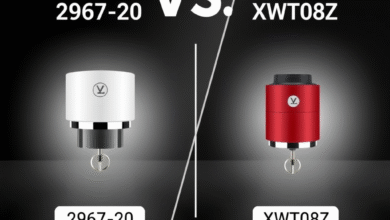Restoring a Vintage Car: Why and How To Do It

Anyone who has ever seen a classic car knows that they exude a certain level of elegance and sophistication. They are truly works of art, and each one is unique. If you are lucky enough to own a classic car, you may be thinking about restoration. There are several reasons why this can be a great decision.
Why you should consider restoring a vintage car
First, owning and driving a vintage car is a classy lifestyle choice. It may take a lot of money and effort, but nothing beats driving it yourself. Classic cars fit a certain aesthetic, and if you’re going for the 60s or 80s look for yourself, having a car from that era is the perfect way to round it all up. Second, classic cars are becoming increasingly rare. As more and more of them are lost to time, those that remain become even more valuable. Third, classic cars often have a high resale value. This means that if you decide to sell it down the road, you could get a significant return on your investment. Finally, restoring a classic car can be a fun and rewarding experience. It is a chance to bring something beautiful back to life and create something that will be cherished for generations to come. If you have a classic car, restoring it is definitely worth considering.
The challenges and appeal of restored vintage cars
For anyone who loves classic cars, the idea of restoring a vintage vehicle can be immensely appealing. However, it’s important to be aware of the challenges that come with restored cars.
First of all, finding original parts can be expensive. Even if you can track down the right parts, there’s no guarantee that they will fit properly. In addition, restored cars often require more maintenance than new cars. Classic cars often have electrical and mechanical systems that are much less reliable than modern ones. As a result, restored cars can be expensive and impractical to operate on a daily basis.
For car enthusiasts, however, the rewards of driving a classic car often outweigh the challenges. When driving a classic car, there may be fewer safety and driver assistance features, but this also means that you are in full, unadulterated control of the vehicle, with no systems or technologies sullying your driving experience. With their retro aesthetic, you are guaranteed to turn heads, too-especially now that retro is all the rage!
How to go about restoring your vintage car
Restoring a vintage car can be a challenging but rewarding process. Rust and worn-out mechanical parts are the two most common issues facing vintage car restoration projects.
Rust
Rust on the top of the car can often be removed with a wire brush, sandpaper, and elbow grease. Still, it may also require more serious treatments like chemical rust removers, rust converters, or cutting off rusted parts and welding on clean ones. Once you have addressed the paint on the car’s surface, strip off the paint by sanding, chemical paint strippers, or blasting. Apply a new coat, and consider using protection such as ceramic coating or paint protection film.
On the other hand, rust under the hood and the undercarriage will always require drastic treatment. Make sure to remove as much surface rust as possible before applying treatment. If you’re trying to tackle rust under the hood, you might have to remove some components for easier access. This will work great for you if you want to replace or clean these components. Choose a rust remover that will also not corrode plastic or rubber surfaces. As for the undercarriage, consider whether the rusted parts have been eaten through or whether they are still thick enough for sanding. For example, driveshafts and axles are usually thick enough that sanding down rust on their surface is adequate. In contrast, floorboards that have been eaten through by rust will have to be completely replaced.

Worn-out mechanical parts
Once the rust and paint are addressed, the engine and other mechanical parts can be rebuilt or replaced. These include the engine, carburetors, transmission, drivetrain, shocks, wheels, and tires. These should also be inspected and repaired or replaced as needed. Many models still have replacement parts, which are widely available online.
When replacing one part, try to replace other components that it interacts with directly, too; for example, when replacing the wheels and tires, you should replace the shocks, too. When you replace the shocks, make sure to also get a front end rebuild kit. This is because old components cause new parts to wear out faster. If you’re having trouble looking for replacement parts, you’ll have to get similar parts; they’ll work as long as they are the exact same size and shape. If they’re not, you might have to do a little modification yourself.
As a last resort, you can get new parts machined. You can ask for help from restoration experts, too! With patience and attention to detail, restoring a vintage car to its former glory is possible.
What to keep in mind during the vintage car restoration process
Restoring a vintage car can be a rewarding experience, but it’s important to keep a few things in mind during the process. First, it’s important to research the vehicle and its history to get an idea of what you’re working with. This will help you understand what parts are original and which may need replacement. Second, take your time and work carefully to avoid damaging the vehicle. Third, remember that the restoration process can be expensive, so be prepared to budget accordingly. With these things in mind, you’ll be on your way to restoring your vintage car to its former glory.
Final thoughts
Restoring a vintage car can be a challenging but rewarding process. It comes at a high cost, but like a time machine, a vintage car can bring you straight to the past. It can even make you feel like a Hollywood celebrity from the past. Start restoring your vintage car today, and make your next drive as stylish as it is exhilarating!
For more valuable information visit this website.






